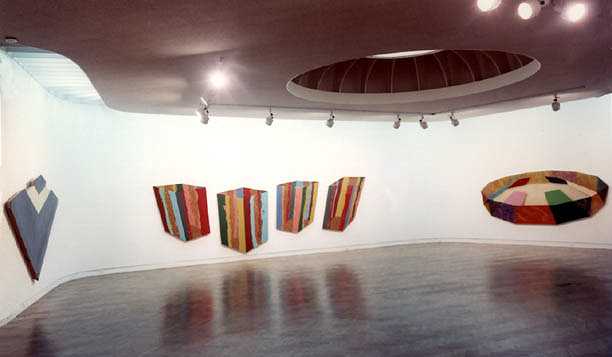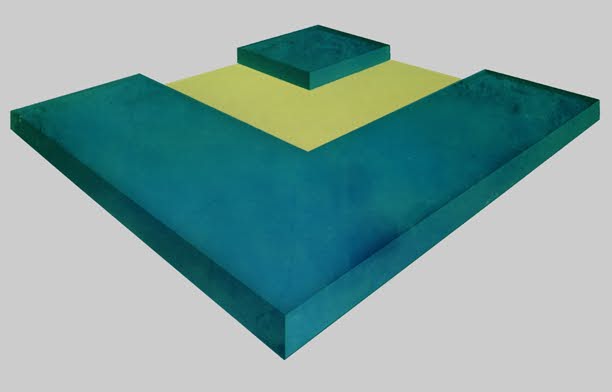A Note on Ron Davis' Illusionism

Our visual systems are exquisitely sensitive to information about the shapes of objects, including depth within an object, that is, which parts are farther and which closer. Consider a piece of paper lying on a table. You can easily tell which side is closest to you. How does your brain know? In other words, what information is available to construct your percept? This information comes in several forms, which are often called "visual depth cues." One cue comes from stereoscopic vision. Slight differences in the two eyes' retinal images are interpreted as depth by the brain. Another cue comes from an unconscious assumption that the paper is a rectangle. This cue is a variant of the "linear perspective" cue. (Try this: trim a thin triangular wedge from one side of a rectangular piece of blank paper. Put it on a table or surface that doesn't have much texture. Look at it from a sharp angle [not from overhead] with just one eye. Looks like a rectangle, doesn't it?) Another cue is height within the visual field — objects that are seen from above (things on tables and floors, for example) are generally farther from you if they are higher in the visual field. Now, notice that those last two cues almost always tell you the correct answer as to what's near and what's far, for real objects in the real world. They are what vision scientists call "statistically valid." Because they almost always give correct information, it makes sense for the brain to pay attention to them and use them during percept construction. Just as it's statistically valid, but not logically necessary, to conclude there was a power failure if the alarm clocks, microwave oven display, and VCR are all blinking when you get home (it's unlikely, but possible, that a cat jiggled all the plugs instead). Now, what if a clever artist were to construct, artificially, a peculiar but very real object in which the depth cues give false testimony? Your brain brain would be perfectly right to conclude that the most likely object, the one it should construct in the percept, is not the real object but the one suggested by the cues.

Six-Ninths Blue, 1966, 72 x 131 x 3 inches, Polyester Resin, Fiberglass, and Wood
This is what happens in a piece like Six-Ninths Blue by Ron Davis. The linear perspective cue, and the height-in-visual-field cue, tell you that the top of the object is much farther away than the bottom (even though it's not). The perspective is nearly identical to that produced by a square-footprint object, seen from just above ground level. In fact, the object has a second perceptual effect: it changes your idea of where the ground is. It's the fact that we see things correctly almost all the time that makes illusions of depth so fascinating. Objects that have invalid depth cues are pretty rare. Unless you're an artist who creates such objects, and therefore sees them all the time — Davis is not as susceptible to his own illusions as he used to be. That we fall prey to them is a tribute to our brains' amazing ability to figure out, for the most part correctly, what cues are reliable indicators of depth.
Benjamin T. Backus
Professor of Psychology
University of Pennsylvania
backus@psych.upenn.edu